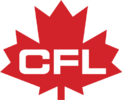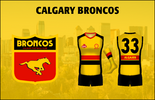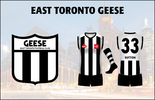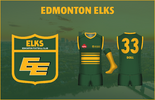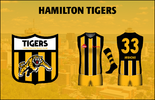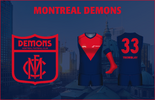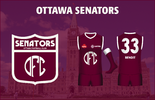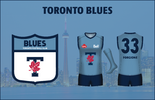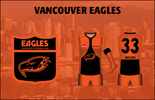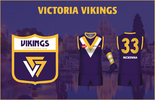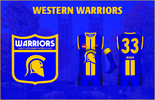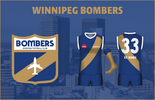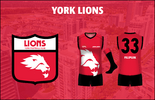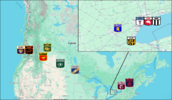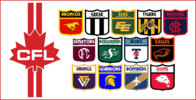- Jul 26, 2023
- 1,573
- 3,941
- AFL Club
- Adelaide
The history of sport in Canada took a sharp turn in the late 19th century. Two Melbourne-born university chancellors, one in British Columbia and the other in Toronto, popularised the 'Victorian Rules' of football and it overtook rugby as the preferred code. The sport, soon to be re-named 'Imperial Rules' and later 'Commonwealth Rules' as it gained popularity in a number of British colonies, became the favourite summer pasttime across Canada as the 20th century progressed and in 1995 is now the second most popular sport in the country, only behind ice hockey.
As the two homes of the sport, British Columbia and Ontario were the first to develop league competitions, and competed in early inter-provincial matches. The Ontario Football League was founded in 1901, with eight clubs from Ontario and Quebec, and lay claim to being the strongest league in the country, with the British Columbia Football Association, later known as the Western Football League, rivalling it in support and level of play. After World War 2, Canada experienced a period of high economic growth and travel across the country became increasingly easier via road, rail and plane, and during this time more talented footballers from the West were lured to OFL clubs. In 1956, recognising that their competition no longer had the same tyranny of distance to protect it from their stronger counterparts in the east, Western Football League officials made the decision to apply for licenses in the Ontario competition. Four initial clubs would leave the WFL and join a newly rebranded Canadian Football League.
In the four decades since then, the CFL has expanded and protracted on several occasions, admitting new teams from the West while some smaller regional teams from Ontario were forced to disband or merge to stay afloat in an increasingly professional competition. Currently there are 13 clubs in the league, although new broadcast revenue and increased fan support have made expansion in the near future look increasingly likely.
--
I have taken inspiration from various places for each of these teams, mainly being real CFL teams, Canadian universities, and Australian clubs.
As the two homes of the sport, British Columbia and Ontario were the first to develop league competitions, and competed in early inter-provincial matches. The Ontario Football League was founded in 1901, with eight clubs from Ontario and Quebec, and lay claim to being the strongest league in the country, with the British Columbia Football Association, later known as the Western Football League, rivalling it in support and level of play. After World War 2, Canada experienced a period of high economic growth and travel across the country became increasingly easier via road, rail and plane, and during this time more talented footballers from the West were lured to OFL clubs. In 1956, recognising that their competition no longer had the same tyranny of distance to protect it from their stronger counterparts in the east, Western Football League officials made the decision to apply for licenses in the Ontario competition. Four initial clubs would leave the WFL and join a newly rebranded Canadian Football League.
In the four decades since then, the CFL has expanded and protracted on several occasions, admitting new teams from the West while some smaller regional teams from Ontario were forced to disband or merge to stay afloat in an increasingly professional competition. Currently there are 13 clubs in the league, although new broadcast revenue and increased fan support have made expansion in the near future look increasingly likely.
--
I have taken inspiration from various places for each of these teams, mainly being real CFL teams, Canadian universities, and Australian clubs.
Last edited:





